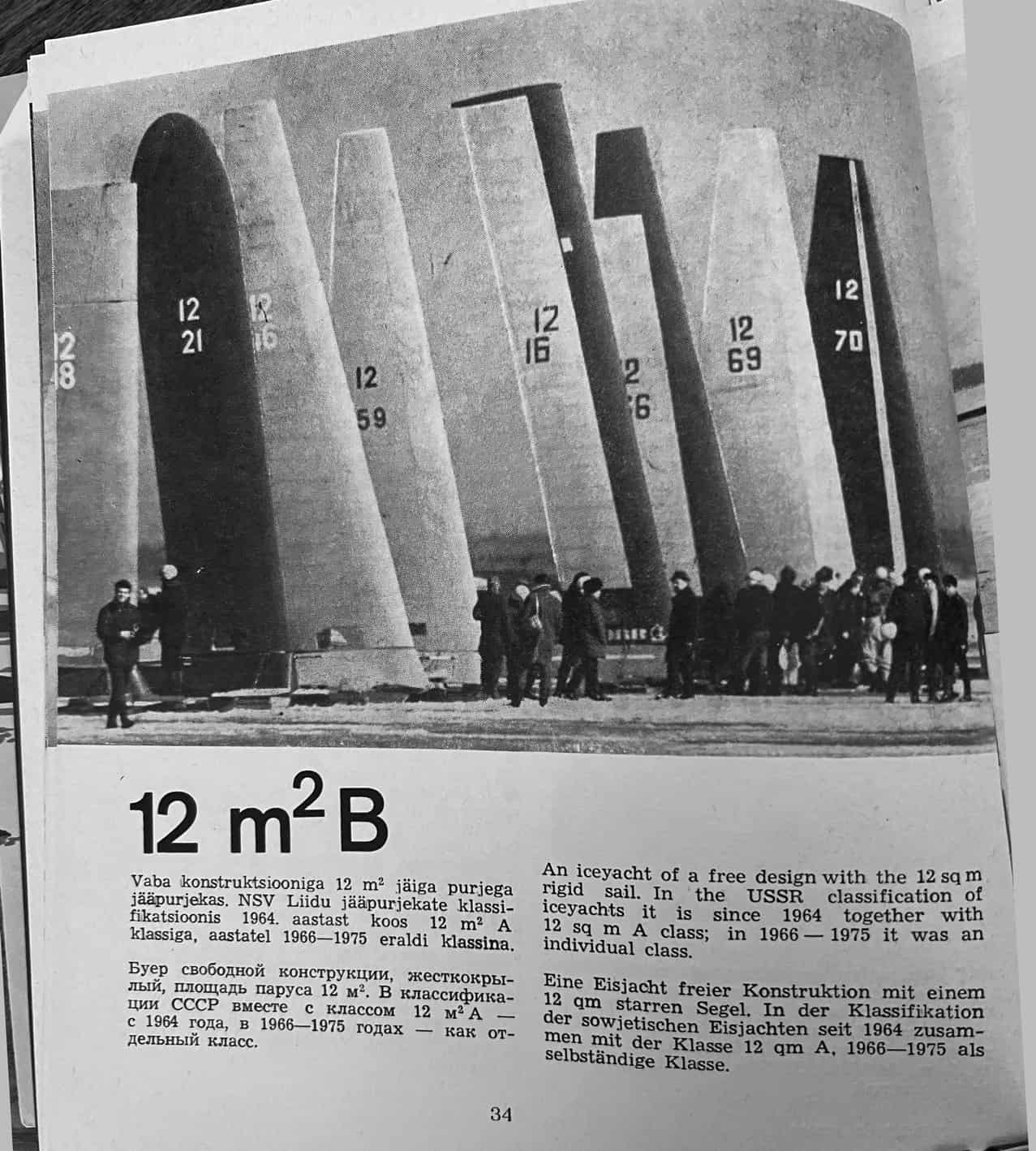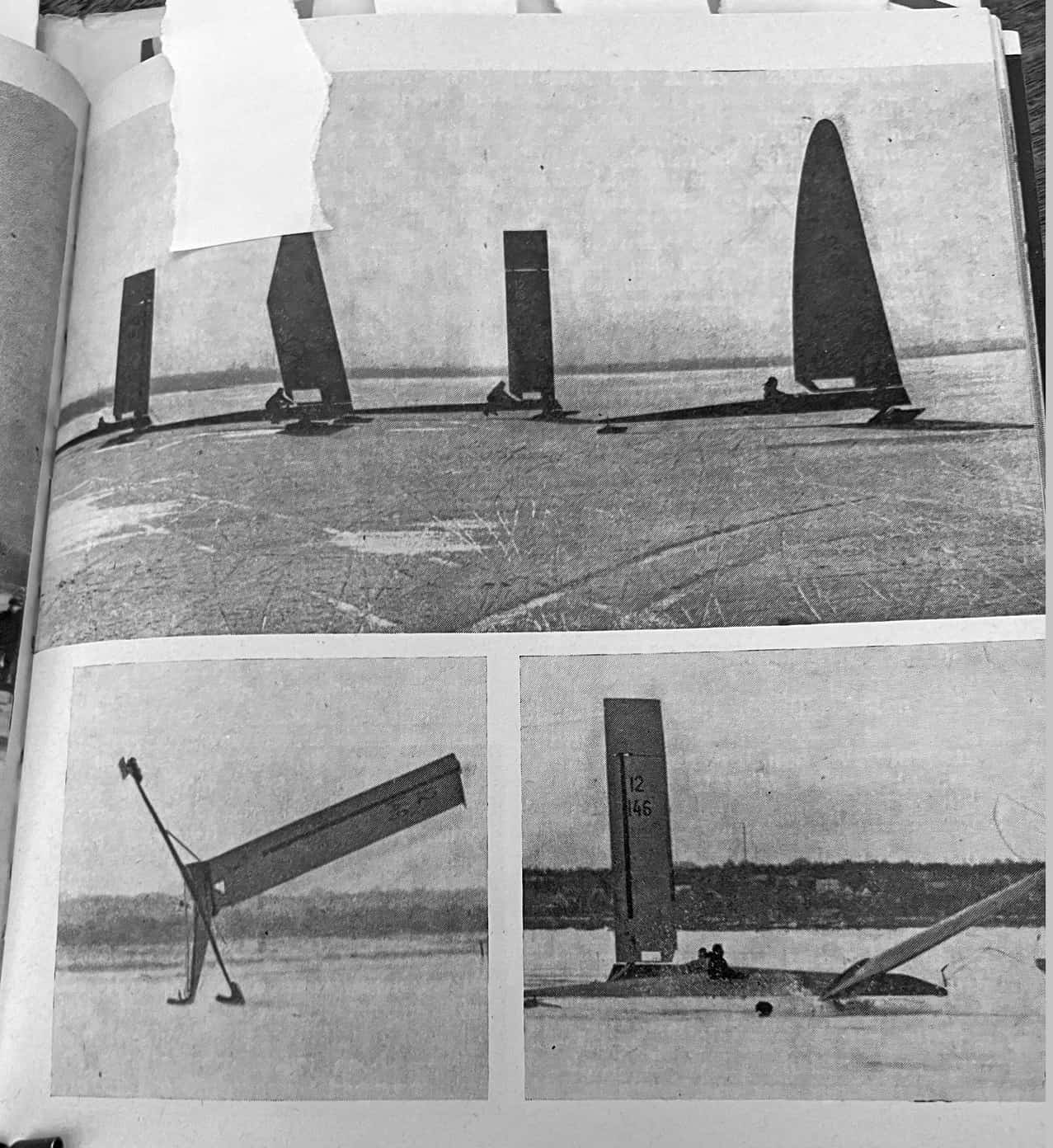by Deb Whitehorse | Sep 17, 2023 | 2023-2024, Home Page, ISA
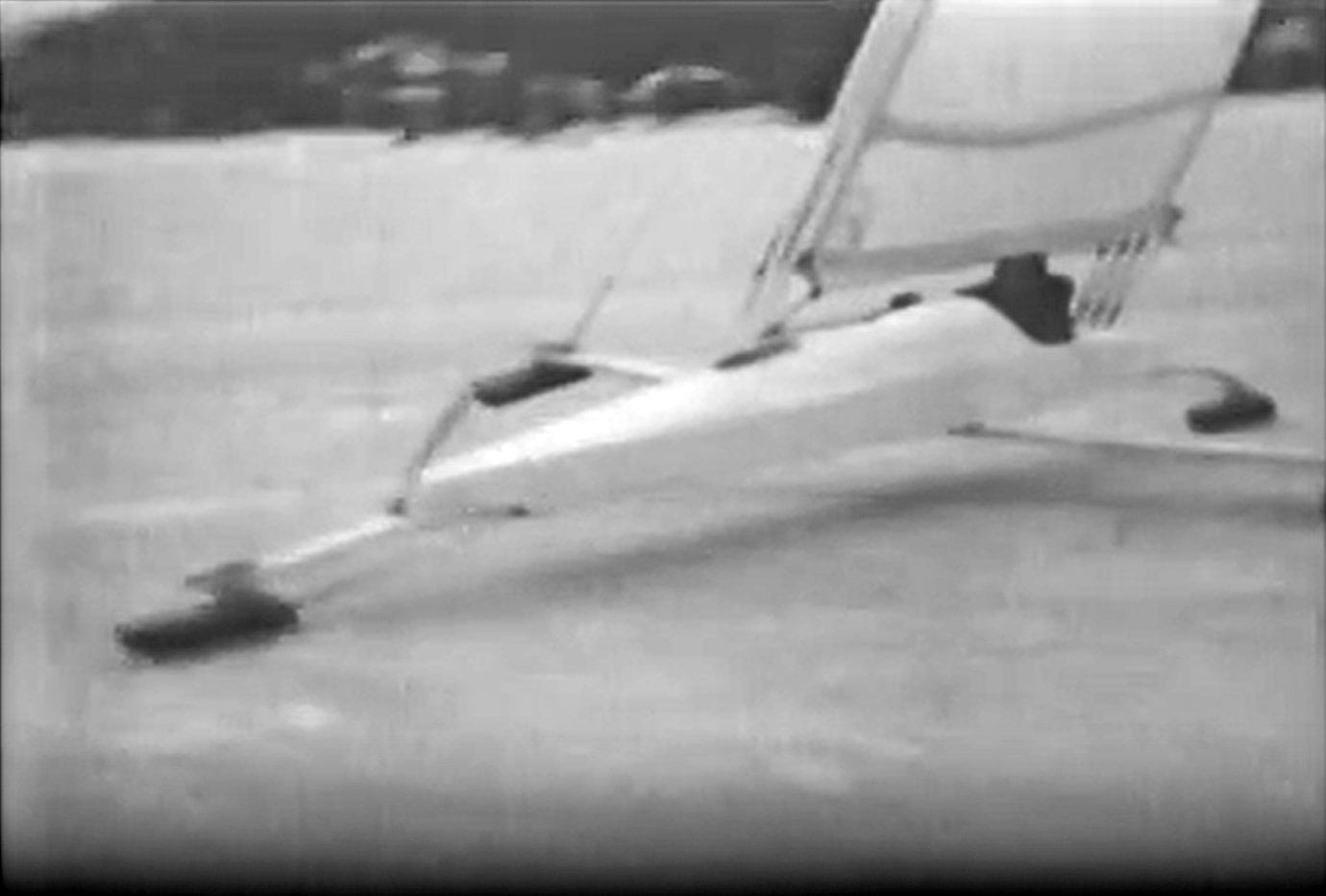
Screen shot from USA: ICE YACHTING ON FROZEN RIVERS IN ILLINOIS (1949) British Pathe. Harry Melges sails a 4-runner Skeeter.
Previous: Iceboat Tech That Never Caught On
Early ISA 1941 – 1942 Video
Watch the 1949 Newsreel here
Iceboat researcher Henry Bossett has unearthed yet another interesting discovery: a 1949 newsreel chronicling the International Skeeter Association regatta held on Fox Lake in Illinois. This vintage footage, accompanied by newspaper clippings, documents the presence of a four-runner iceboat helmed by Harry Melges, who happens to be Buddy’s father and a member of the Skeeter Iceboat Club. Observe that the fourth runner was positioned at the stern, deviating from the standard practice seen in other configurations where two runners were typically placed at the front. Adding her own memories to this historical account is Jane Wiswell Pegel, a high school student at the time.
Jane Pegel remembers:
I think the 4-runner boat belonged to Bob Ferris. I was in high school. My first iceboat race was at the Fox Lake ISA. I was first at the windward mark in the ladies’ division in a 20 foot Mead (skeeter.) But I did not know how to sail downwind and ended up second in ladies overall. It snowed for the drive home.
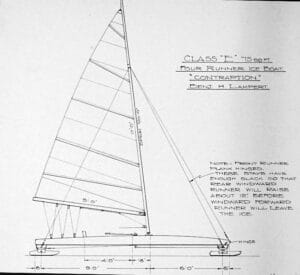
Ben Lampert’s 4-Runner Skeeter Plan
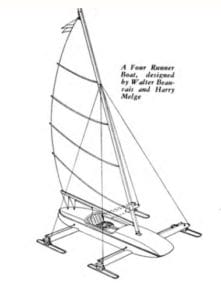
Illustration from Wings On The Ice
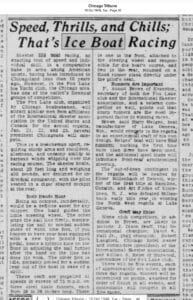
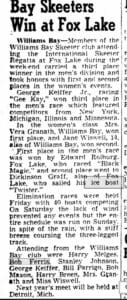

Ban Lampert’s 4 Runner Skeeter from the Carl Bernard Scrapbook Collection
Like this:
Like Loading...
by Deb Whitehorse | Jul 19, 2023 | 2023-2024, Home Page
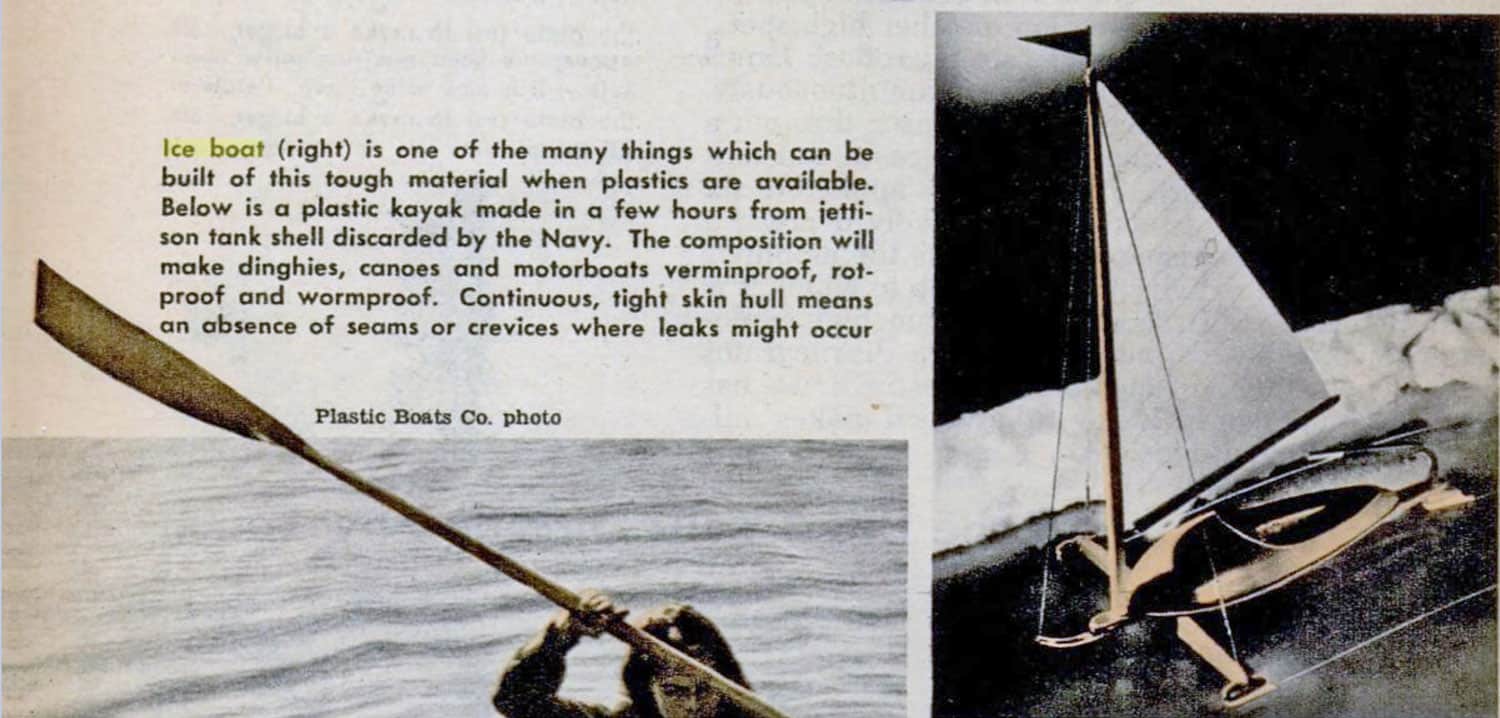
Here’s another intriguing discovery shared by Henry Bossett. At the dawn of the age of composites, Popular Mechanics suggested creating iceboat hulls from repurposed jettisoned plastic Naval fuel tank shells.
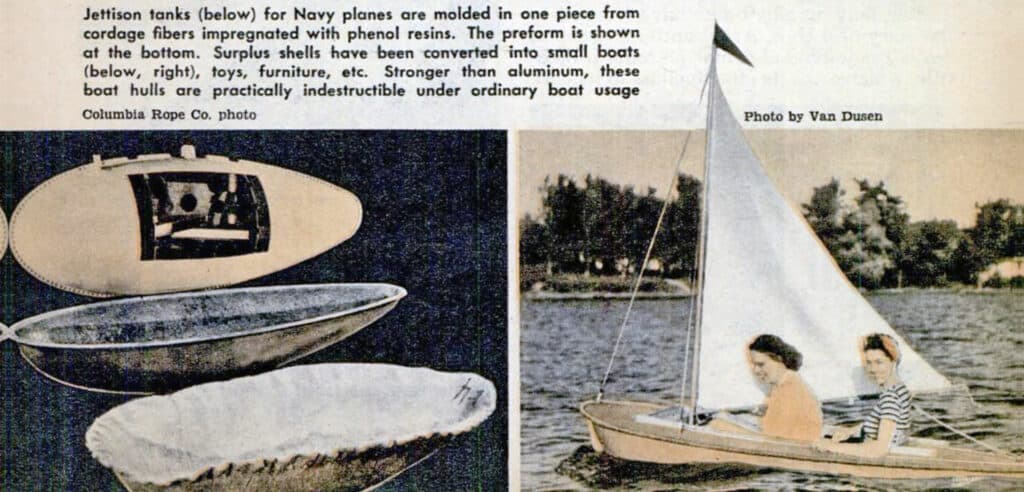
UPDATE: Here’s a note from someone who actually tried this.
After seeing your last post about discarded fiberglass fuel tanks, I thought I would send you two pictures of attempt by two knuckleheads putting together five pieces of the discarded Navy tanks for soft water version of our boat, later to be converted for use on the ice. The plan was by two seniors in high school to launch our dream boat in Northbrook IL. To then travel down the Mississippi to New Orleans and on return, to add runner plank, mast, runners and sail for our great venture in to ice sailing. Alas, we only made our river trip as far as Wheeling, IL before our spring trip became the second version of the Titanic! All former plans canceled.
Retired Iceboater
Ed Evans
Nite 433 & 72
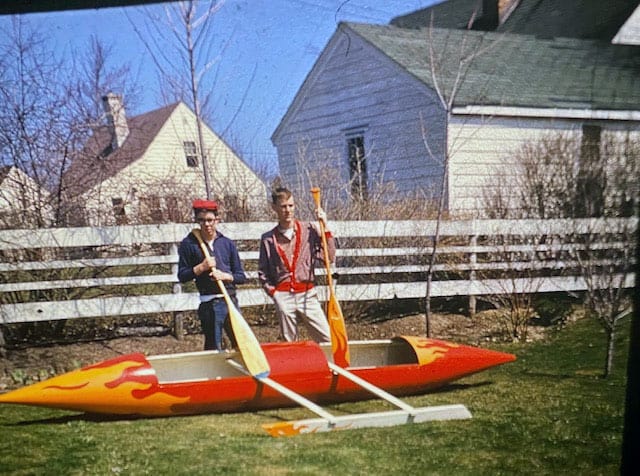
Like this:
Like Loading...
by Deb Whitehorse | Apr 29, 2023 | 2022-2023, Home Page
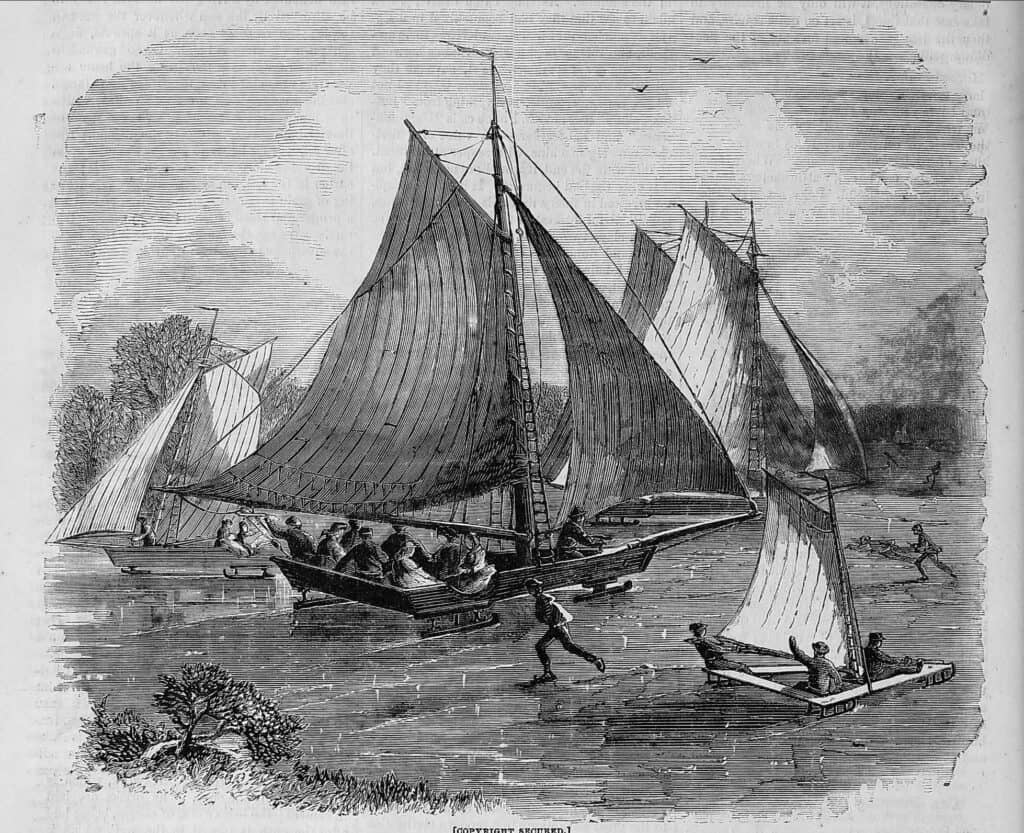
The concept of bow-steering iceboats is much older than I had imagined, which makes sense because iceboaters have a long tradition of trying different technologies
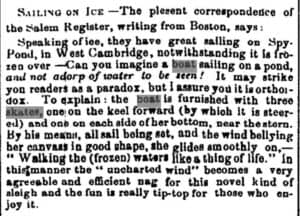
“Can you imagine sailing on a pond and not a drop of water to be seen?”
Henry Bossett discovered an 1897 illustration and an 1850 Boston newspaper article while gathering material for our online Cape Cod Maritime Museum presentation, proving that sailors were familiar with front-runner steering in the 19th century. (Museum presentation, Sunday, April 30, 1:30 CT / 2:30 ET. Register here.)
The big boat in the illustration filled with passengers reminds me of the BERZERKER (a stern-steerer) last seen on Maumee Bay in Toledo. The BERZERKER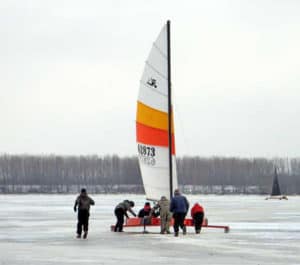 was Frankenstiened together by the Toledo Ice Yacht Club as a one-weekend party boat. BERZERKER gave many people their first iceboat ride on Lake Erie during that Winter Carnival weekend in 2007.
was Frankenstiened together by the Toledo Ice Yacht Club as a one-weekend party boat. BERZERKER gave many people their first iceboat ride on Lake Erie during that Winter Carnival weekend in 2007.
Like this:
Like Loading...
by Deb Whitehorse | Feb 26, 2023 | 2022-2023, Home Page
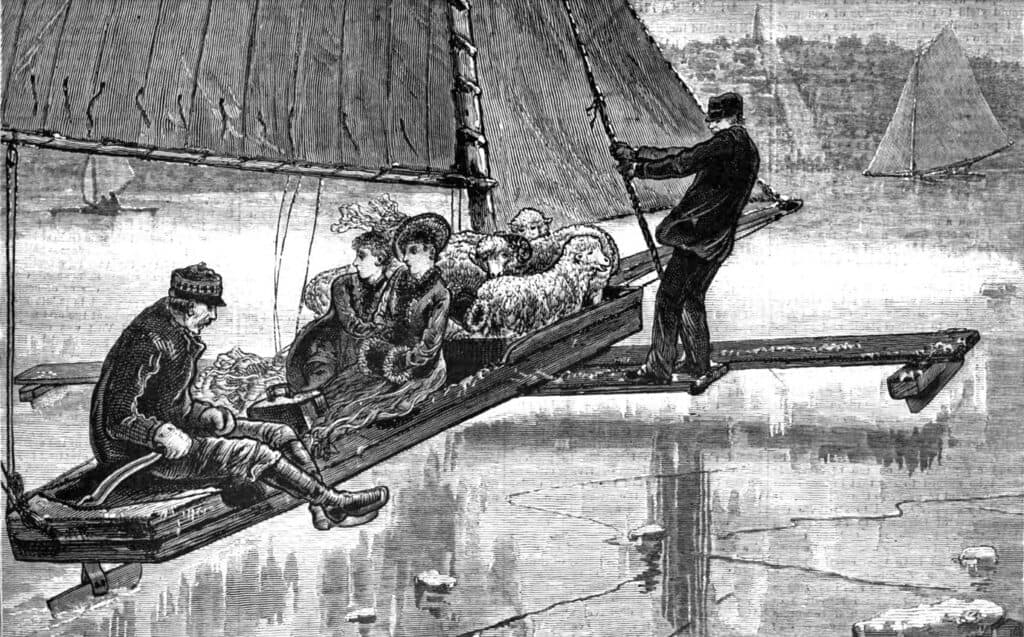
60 mph mutton on ice
While we wait for the Zamboni that will improve the ice, here is something from the files of iceboat historian Henry Bossett. Did you know that ice yachts not only hauled building materials and people but also conveyed livestock?
Hank Ward was the enterprising Hudson River ice yachtsman who ferried people and then sheep between Newburg and Fishkill, NY.
This 1879 woodcut depicts Ward’s iceboat ferry. The woodcut might be a pastoral view of reality because the restrained sheep were not willing passengers, and elegantly dressed “lady excursionists” in the close vicinity of livestock would have been a bad combination.
February 11, 1879, Evansville, Indiana Journal reported, “Ninety sheep were brought across the river, ten at a time. One or two trips were made so quickly that the boat crossed over and returned to the Fishkill side before the next ten sheep could be caught and their legs tied.”
Like this:
Like Loading...
by Deb Whitehorse | Aug 31, 2022 | 2022-2023, Home Page
Here’s another find from Henry Bossett, The Winds of Ice Fields, a Russian booklet published in the 1970s. In addition to some crucial DN history, the booklet features some epic photos of 12-meter wing sail iceboats.
All Wing Sail posts.
Like this:
Like Loading...














